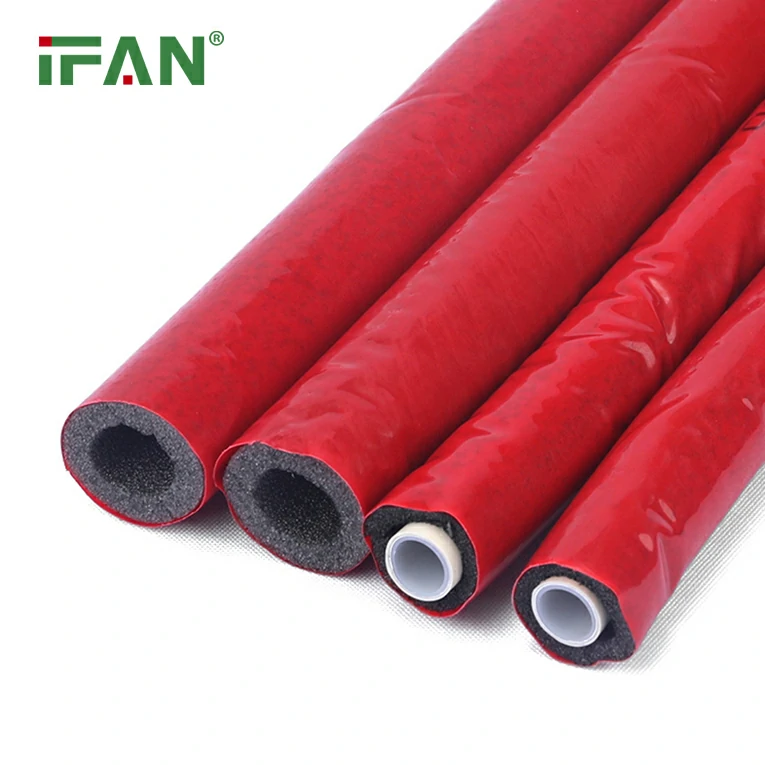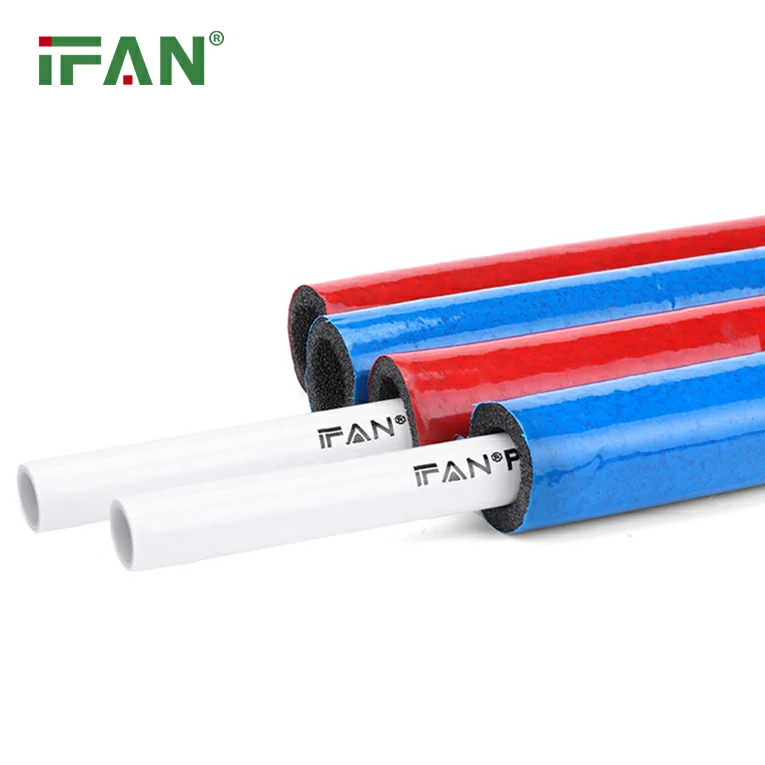Introduction
The plumbing industry is constantly evolving, with new materials and technologies emerging to meet the demands of modern construction and infrastructure. One such innovation is the Polypropylene Random Copolymer (PPR) pipe, which has gained significant popularity due to its durability, versatility, and eco-friendliness. In recent developments, the launch of a dedicated retail segment for PPR pipes marks a significant milestone for both manufacturers and consumers. This article explores the features of PPR pipes, the importance of the retail segment, and how this initiative is set to transform the plumbing landscape.
What are PPR Pipes?
Understanding PPR Pipes
PPR pipes are a type of thermoplastic piping system made from Polypropylene Random Copolymer. They are designed for a variety of plumbing applications, including hot and cold water supply, irrigation, and industrial fluid transport. PPR pipes are known for their lightweight nature, resistance to corrosion, and excellent thermal insulation properties, making them an ideal choice for both residential and commercial plumbing systems.
Key Benefits of PPR Pipes
- Durability: PPR pipes boast an impressive lifespan, often exceeding 50 years. Their robust construction ensures they can withstand high pressures and temperatures, making them suitable for various applications.
- Corrosion Resistance: Unlike metal pipes, PPR pipes do not rust or corrode, ensuring that the water transported remains clean and safe for consumption. This characteristic is crucial for maintaining the quality of drinking water.
- Thermal Insulation: PPR pipes provide excellent thermal insulation, which helps maintain the temperature of the water being transported. This feature is particularly beneficial for hot water systems, reducing energy consumption.
- Lightweight and Easy to Install: The lightweight nature of PPR pipes makes them easy to handle and install. This can significantly reduce labor costs and installation time, making them a cost-effective choice for contractors.
- Eco-Friendly: PPR pipes are recyclable and produced with minimal environmental impact. Their production process is energy-efficient, aligning with global sustainability goals.
The Launch of the Retail Segment for PPR Pipes
Overview of the Retail Segment
The launch of a dedicated retail segment for PPR pipes is a strategic move aimed at making these high-quality plumbing solutions more accessible to consumers, contractors, and builders. This initiative allows customers to purchase PPR pipes directly from retail outlets, simplifying the procurement process and enhancing customer experience.

Benefits of the Retail Segment
- Increased Accessibility: By establishing a retail segment, manufacturers can ensure that PPR pipes are readily available to consumers and contractors. This accessibility is crucial for meeting the growing demand for reliable plumbing solutions.
- Enhanced Customer Experience: Customers can now visit retail stores to view and purchase PPR pipes, allowing them to make informed decisions based on their specific needs. This hands-on approach enhances the overall customer experience.
- Education and Awareness: The retail segment provides an opportunity for manufacturers to educate consumers about the benefits and applications of PPR pipes. This can lead to increased awareness and adoption of PPR technology in various plumbing projects.
- Diverse Product Range: The retail segment will offer a comprehensive range of PPR pipes and fittings in various sizes and specifications. This diversity ensures that customers can find the right products for their specific plumbing needs.
- Promotional Opportunities: Retail outlets can host promotional events and demonstrations to showcase the advantages of PPR pipes. This can attract more customers and boost sales.
Applications of PPR Pipes
Residential Plumbing
In residential settings, PPR pipes are widely used for hot and cold water supply systems. Their durability and resistance to temperature fluctuations make them an ideal choice for modern plumbing installations. Homeowners benefit from the peace of mind that comes with using high-quality materials that ensure safe drinking water.
Commercial and Industrial Use
PPR pipes are extensively used in commercial and industrial applications. Some common uses include:
- HVAC Systems: PPR pipes are utilized in heating, ventilation, and air conditioning systems due to their thermal insulation properties and resistance to condensation.
- Irrigation Systems: In agriculture, PPR pipes facilitate efficient irrigation, helping to conserve water while ensuring crops receive adequate hydration.
- Chemical Transport: Their resistance to chemicals makes PPR pipes suitable for transporting various fluids in industrial settings, ensuring safety and compliance with regulations.
Fire Protection Systems
PPR pipes are increasingly being adopted in fire protection systems due to their ability to withstand high temperatures and pressures. Their lightweight nature also makes installation easier in complex building structures.
The Importance of PPR Pipes in Modern Plumbing
Enhancing Water Quality
Access to potable water is a fundamental human right. The quality of water directly impacts public health, and using high-quality piping materials is crucial in maintaining that quality. PPR pipes contribute to this goal by ensuring that the water transported remains free from contaminants.
Reducing Contaminants
The use of PPR pipes minimizes the risk of leaching harmful substances into the water supply. Unlike metal pipes, which can corrode and release toxins, PPR pipes maintain the purity of the water, making them an ideal choice for potable water systems.
Supporting Sustainable Development
As global awareness of environmental issues increases, the plumbing industry is moving towards more sustainable practices. PPR pipes, with their recyclable nature and energy-efficient production processes, align with these sustainability goals. By promoting efficient water transport and reducing leaks, PPR pipes contribute to water conservation efforts, particularly in regions facing water scarcity.
Market Trends in the PPR Pipe Industry
Growing Demand for PPR Pipes
The demand for PPR pipes is on the rise globally, driven by several factors:
- Urbanization: Rapid urbanization is leading to increased construction activities, which in turn drives the demand for reliable plumbing solutions. PPR pipes, with their durability and efficiency, are becoming the preferred choice for new developments.
- Government Regulations: Stricter regulations regarding water quality and plumbing standards are pushing manufacturers and contractors to adopt high-quality materials like PPR pipes to ensure compliance.
- Sustainability Initiatives: As environmental concerns grow, there is a shift towards sustainable materials in the plumbing industry. PPR pipes, being recyclable and energy-efficient, align with these sustainability goals.
Technological Advancements
Ongoing technological advancements in the production of PPR pipes are enhancing their performance and expanding their applications. Innovations such as improved jointing techniques and enhanced thermal insulation properties are making PPR pipes even more appealing to consumers.
Conclusion
The launch of a dedicated retail segment for PPR pipes represents a significant advancement in the plumbing industry. By increasing accessibility, enhancing customer experience, and promoting the benefits of PPR technology, this initiative is set to transform the way consumers and contractors approach plumbing solutions. As the demand for reliable and sustainable plumbing materials continues to grow, PPR pipes will play a crucial role in meeting these needs. With their durability, corrosion resistance, and eco-friendly characteristics, PPR pipes are poised to become the go-to choice for modern plumbing applications.
FAQs
- What are PPR pipes used for?
- PPR pipes are primarily used for transporting hot and cold water in residential, commercial, and industrial plumbing systems.
- What are the benefits of using PPR pipes?
- PPR pipes offer durability, corrosion resistance, thermal insulation, ease of installation, and eco-friendliness.
- How long do PPR pipes last?
- PPR pipes can last over 50 years with proper installation and maintenance, making them a long-term solution for plumbing needs.
- Are PPR pipes safe for drinking water?
- Yes, PPR pipes are designed to meet international standards for potable water systems, ensuring safe transport of drinking water.
- How do PPR pipes compare to traditional metal pipes?
- PPR pipes are lighter, more resistant to corrosion, and do not leach harmful substances, making them a safer and more efficient alternative to traditional metal pipes.






